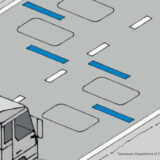Bill advances to double fines, camera use on Louisiana’s Atchafalaya Basin Bridge
A bill in the Louisiana Senate continues to advance that addresses concern about travel along the Atchafalaya Basin Bridge.
Currently, passenger vehicle drivers are allowed to travel up to 60 mph along the Interstate 10 span in South Louisiana. Truck drivers are allowed to travel up to 55 mph along the span connecting Lafayette and Baton Rouge. Additionally, trucks are limited to use the left lane only for passing.
State law now authorizes fines of up to $175 for speed and lane use violations. Repeat offenders could face up to $500 fines.
Highway safety corridor designation
The Senate Finance Committee voted unanimously this week to advance a bill that would designate the 18-mile span as a highway safety corridor. The Senate Transportation, Highways, and Public Works Committee previously approved the bill by unanimous consent.
Distinction as a highway safety corridor would authorize double fines for speeding. Offenders would first be issued warnings before they are issued a $350 citation for a third offense. Subsequent offenses would result in $1,000 fines.
Sponsored by Senate President Page Cortez, R-Lafayette, SB435 includes a provision to authorize the use of enforcement cameras.
Cortez said change is needed to address safety concerns along the span. He has told lawmakers that two years ago there were 203 accidents along the span. During that time, there were 55 injuries and two fatalities.
In 2021, there were 269 accidents with 89 injuries and two fatalities.
“Anyone who drives that 18-mile stretch knows that we have to do something to change the behavior,” Cortez told committee members.
The Louisiana Department of Transportation and Development would be responsible for placing additional signs along the roadway to alert travelers of the speed limits and truck lane restriction.
There would be eight sets of speed limit signs placed on the eastbound portion of the bridge. Eight sets of signs also would be placed on the westbound side.
Additionally, six sets of “Trucks Right Lane Only” signs would be equally spaced on the eastbound portion of the bridge. The same number of signs would be posted along the westbound stretch.
Ticket cameras
One provision in the bill would authorize the use of cameras to monitor for speeding along the bridge.
Cortez said the transportation department would be required to post cameras along the span to time how long it takes a vehicle to travel to certain points along the bridge.
Cameras would be posted at both of the bridge entrances, at the two exits along the corridor, and at the end of the bridge in each direction.
Vehicles that reach the points along the bridge at travel rates faster than would be expected for the vehicle and posted speed would be subject to a violation notice.
Cortez said something needs to be done to help law enforcement counter the use of mobile apps that alert drivers to where law enforcement vehicles are located.
“Trucks know this too. They just do a leapfrog all the way down. They are all going 70 and 75 mph.”
Cortez added that because of limited shoulder space it is not safe to put state troopers on the bridge to enforce traffic rules.
He said the solution is to create behavior modification.
SB435 now moves to the full Senate for consideration as early as Wednesday, April 27. LL









